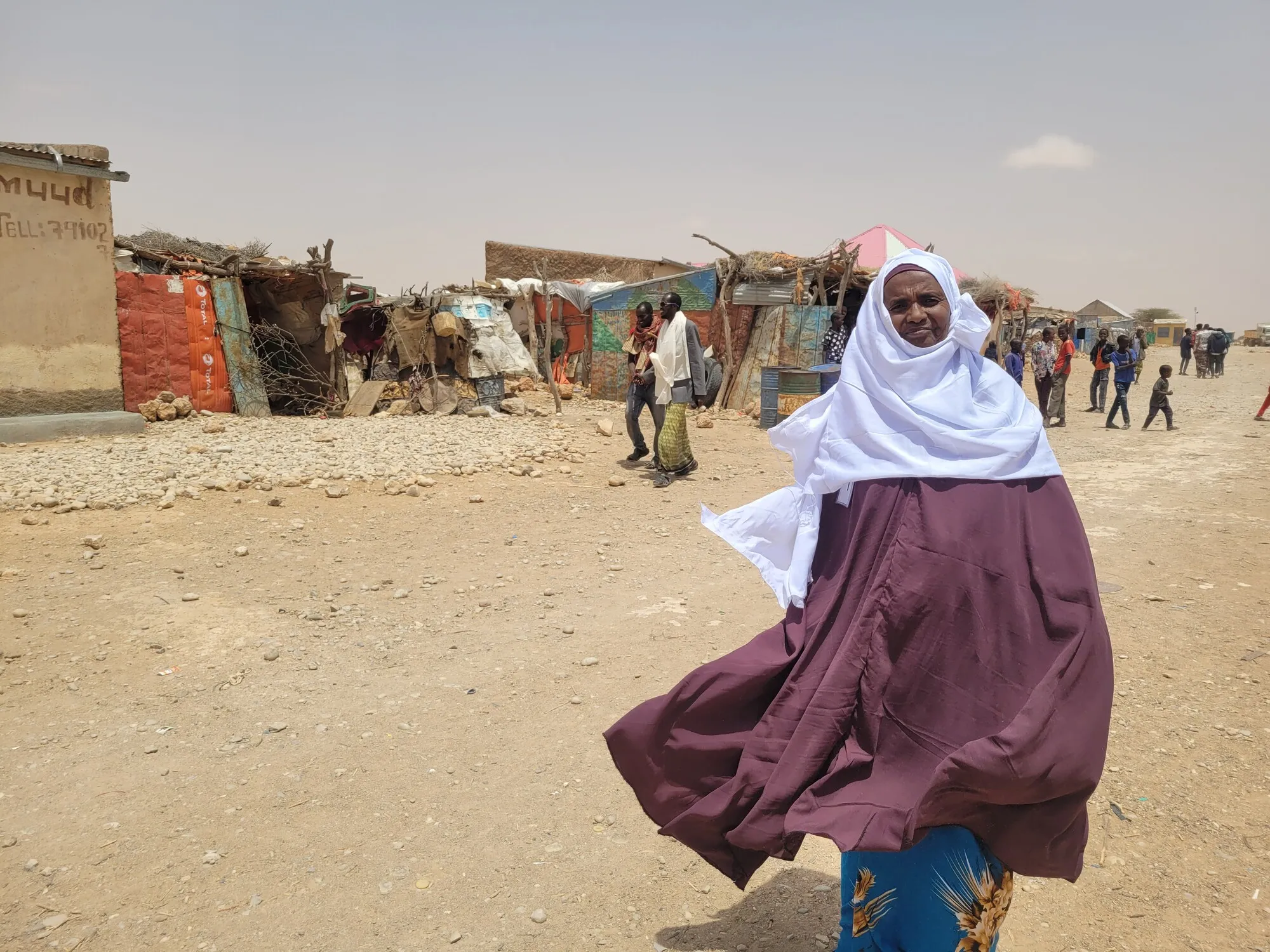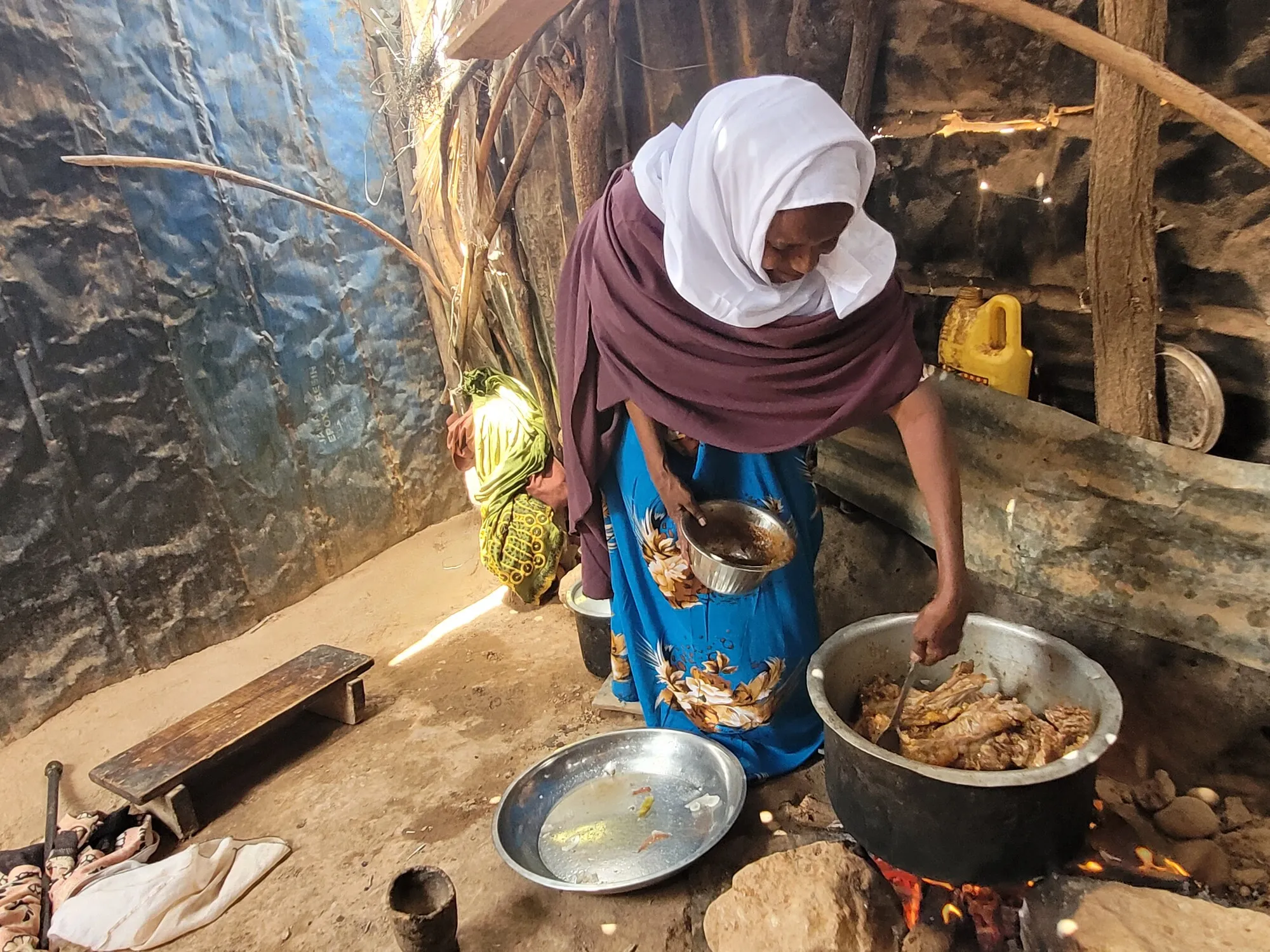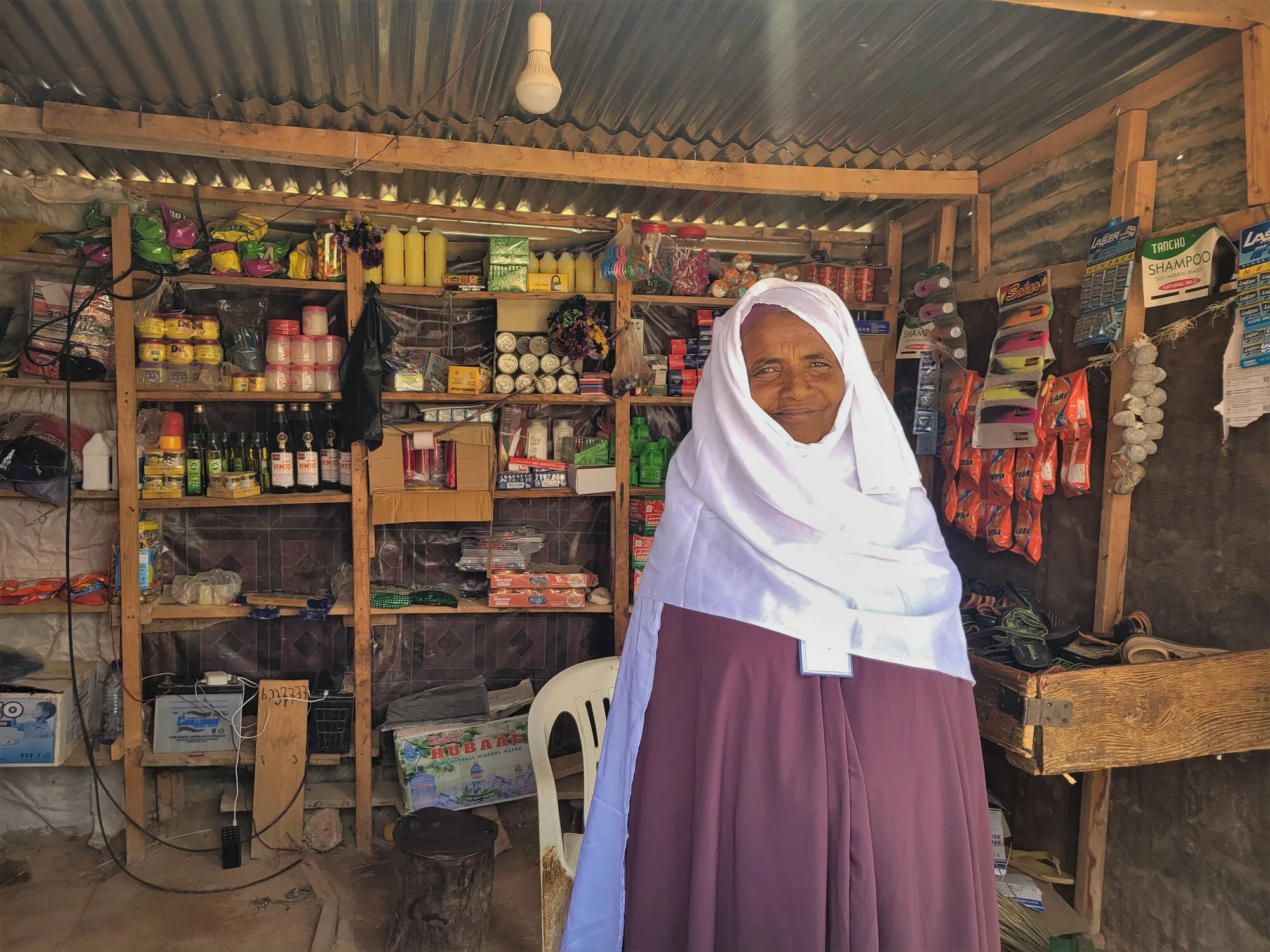The villagers here are former livestock farmers, most of whom have lost their animals due to the drought. Some of the villagers still have a remnant herd, but the animals are so weak that they can no longer manage to walk to the water. “We have to bring the water to the animals so that they can drink,” says Ardo Dhunkel, 60, chair of a small savings and loans group established by CARE.
It has not rained enough in Somalia for the last two years, and this village has been particularly hit hard. The streets are dry as dust, and there are hardly any plants or trees that still grow here to provide shade. The wind blows the sand into the eyes, and with every breath the dust sits deeper in the lungs.
400% increase in water prices
Due to the distance and difficulty to reach the village, water deliveries are four times more expensive than in other villages located along the main roads. One water delivery is 40 water barrels, with one barrel holding about 200 liters of water. The village, with about 600 inhabitants, pays roughly $200 for such a delivery. Converted, that is about 13 liters of water per person, which must last for an entire month.
Since the village is far away from other villages and towns, there are hardly any income sources for its inhabitants.
“The only thing we could do was to sell our cattle when the market price was good,” Ardo says. “Now there is no sale. My family still owns about 100 sheep and goats. Before the drought, we owned more than 500. Most of them died because we could not give them water or food.”
Ardo’s children take care of the livestock and move around with the animals to find water and food. However, many of the animals are very weak or sick.





